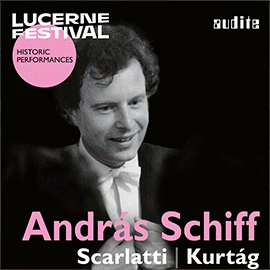Diese Interpreten sind nicht die ersten, die aus ihrem erprobten Umfeld, dem Kantatenwerk von Johann Sebastian Bach, herauskommen und sich auf neuen Pfaden bewegen. Das Bach Collegium Japan unter Masaaki Suzuki hat bei den Einspielungen des Barockkomponisten zumeist überzeugende bis großartige Ergebnisse erzielt.
Jetzt wagen sie sich bei Brahms in andere Gefilde. Das wird auch bei Besetzung deutlich, die den Chor in allen Stimmen von drei auf neun Mitglieder erweitert. Ähnliches darf man beim Orchester annehmen. Und vor allem bewegt man sich in einer anderen Epoche der Stilistik.
Im ersten Satz, Selig sind, die da Leid tragen, haben die beiden Ensembles ihren Auftritt. Das hat alles seine Ordnung und beim Chor fällt die phänomenale Aussprache auf. Aber trotz eher etwas kürzerer Dauer wirkt der Satz zu behäbig und getragen. Im zweiten Satz, Denn alles Fleisch, es ist wie Gras, bleibt es bei dem Eindruck. Zu den Worten von Jesaja hinterlassen die lauten Passagen einen nicht ganz geordneten Eindruck im Chor.
In den Sätzen ‘Herr, lehre doch mich“’ und’Denn wir haben hie keine bleibende Statt’ tritt als Solostimme der Bariton Jochen Kupfer hinzu. Seine Interpretation seiner Partien zeigt einen gesichert agierenden Sänger, der mit angenehm sonorer Stimme und Gestaltungsnuancen überzeugt.
Die Sopranistin hat bekanntermaßen ihren Anteil am Geschehen nur im später komponierten ‘Ihr habt nun Traurigkeit’. Miku Yasukawa lässt diese Aufgabe mit einer, positiv formuliert, naiv frischen Stimme, die kaum formende Elemente erkennen lässt. Bei beiden Solisten ist die Aussprache sehr überzeugend.
Chor und das Orchester bringen das Werk alles in allem gelungen zur Geltung. Glanzpunkte setzten sie aber auch nicht. Masaaki Suzuki führt alle Beteiligten mit sicherer Hand durch die Partitur und weiß auch in den dramatischeren Momenten das Geschehen noch zu lenken.
Die beschriebenen Merkmale finden sich auch in allen nicht erwähnten Passagen. Insgesamt hören wir eine ganz ordentliche Interpretation, die aber gewisse Schwächen in der Umsetzung offenbart. Auch von der Gesamtanlage her bleibt sie blass. Der etwas leichtere Eindruck der Deutung mag zwar eine neue Sicht eröffnen. Aber das gelingt nicht immer zwingend. Darauf mag auch der andere kulturelle Hintergrund einen Einfluss gehabt haben. Der Trost für die Hinterbliebenen wird hier durch maßvolle Schritte und Wallungen bewerkstelligt.
These performers are not the first to step out of their tried and tested environment, the cantatas of Johann Sebastian Bach, and explore new paths. The Bach Collegium Japan under Masaaki Suzuki has achieved mostly convincing to magnificent results in recordings of the baroque composer.
Now they are venturing into other realms with Brahms. This is also evident in the instrumentation, which expands the choir from three to nine members in all parts. The same can be said of the orchestra. And above all, they are moving into a different stylistic epoch.
In the first movement, Blessed are they that mourn, the two ensembles make their entrance. Everything is in order and the choir’s phenomenal pronunciation is striking. However, despite its somewhat shorter duration, the movement seems too ponderous and carried. In the second movement, For all flesh, it is like grass, the impression remains the same. The loud passages to the words of Isaiah leave a not entirely orderly impression in the choir.
In the movements ‘Herr, lehre doch mich’ and ‘Denn wir haben hie keine bleibende Statt’, baritone Jochen Kupfer joins in as a solo voice. His interpretation of his parts shows an assured singer with a pleasantly sonorous voice and convincing nuances.
As is well known, the soprano only has her part in the action in the later composed ‘Ihr habt nun Traurigkeit’. Miku Yasukawa performs this task with a, to put it positively, naively fresh voice that barely reveals any formative elements. The pronunciation of both soloists is very convincing.
All in all, the choir and orchestra successfully bring the work to life. However, they do not provide any highlights. Masaaki Suzuki guides everyone involved through the score with a sure hand and knows how to steer the action even in the more dramatic moments.
The characteristics described can also be found in all the passages not mentioned. Overall, we hear a quite decent interpretation, but one that reveals certain weaknesses in its realization. It also remains pale in terms of the overall structure. The somewhat lighter impression of the interpretation may open up a new perspective. But it does not always succeed in doing so. The different cultural background may also have had an influence on this. The consolation for the bereaved is brought about here by measured steps and surges.


















